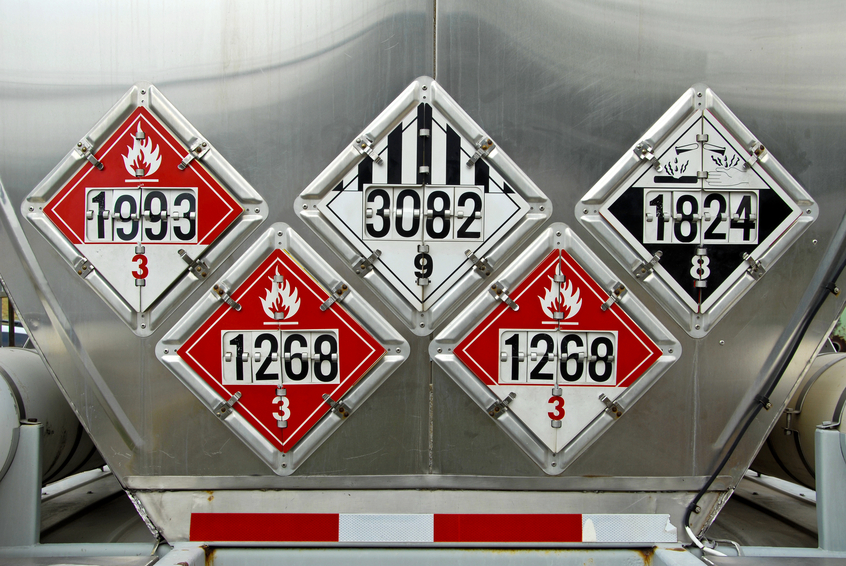In the latest roadside inspection statistics from the Federal Motor Carrier Safety Administration (FMCSA), four of the top 10 violations related to transporting hazardous materials had to do with placarding requirements. But, did you know that even if you don’t transport hazardous materials, you still need to be familiar with the hazmat placards? Today we will review some recent guidance from the Pipeline and Hazardous Materials Safety Administration (PHMSA) regarding permissive and prohibited placarding. Tomorrow we will look at placarding Class 9 hazardous materials.

|
Most trucking companies advertise their services on their trucks and many make extra money nowadays renting out ad space on their trucks. However, what some trucking companies may not know is that they could be violating U.S. Department of Transportation (DOT) hazardous materials regulations (HMR) even if they are not transporting hazardous materials.
Placards, like labels, are used to graphically communicate a cargo’s hazard. Generally, labels are applied to packages and drums, while placards are placed on the outside of trucks, railcars, or freight containers. It’s important that any other information on the outside of the vehicle not be potentially confusing to emergency responders when it comes to a hazardous materials placard.
Can You Put an Ad on Your Truck?
Well, that depends on the ad.
The HMR, found at 49 CFR 172.502, outlines prohibited and permissive placarding. One of the prohibitions has to do with any sign, advertisement, slogan (think—“Drive Safely”), or device that could be confused with a placard. The idea is not to dilute or obscure the hazard information provided by a placard. However, this can be confusing in itself and it is left to your judgment whether the ad or sign you want to use conflicts with any DOT placard. This means that you have to know your hazmat placards.
PHMSA recently responded to any inquiry about a specific advertisement that was a blue square-on-point (i.e., diamond-shaped) with a white “W” in the middle. PHMSA officials responded that this particular ad would be prohibited because it is of the same shape, size, and color to a required placard. They specifically mentioned the “Dangerous When Wet” placard found at 49 CFR 548, which is a diamond with a blue background and white lettering. PHMSA officials also said that the ad was located on the vehicle where placards are normally found—on the rear and sides of the box trailer. In their opinion, this particular ad would be confused with a placard in an emergency situation.
What About a Logo?
Another company asked for guidance about putting their logo on their trucks. PHMSA officials determined from photos and descriptions that that the logo was OK. Let’s see why.
Although the company logo contained similar design elements contained in hazmat placards, such as color and shape, there were other graphics such as the company name and depiction of a road that readily distinguished it from any hazmat placards. It was also placed on the sides of equipment and doors of the vehicles, which are positions that hazmat placards are not normally located.
Takeaway
You may not affix or display a placard on a packaging, freight container, unit load device, motor vehicle, or railcar unless the material being offered or transported is a hazardous material, the placard represents a hazard of the hazardous material being offered or transported, and the placard conforms to the applicable placarding requirements.
Let’s face it—it’s the rare truck rolling down the street as a completely blank canvas. If you are going to put any information on your truck, you must be familiar with DOT’s hazardous materials placards and where they are required to be placed even if you do not transport hazardous materials. You must also use care in the sizing and placement of things like ads and logos in order to avoid any possibility of confusion with a hazmat label or placard.
You can begin delving into placard requirements by reviewing this DOT chart that shows hazardous materials warning labels and placards.
Check tomorrow’s Advisor for a discussion of placarding requirements for Class 9 hazardous materials.
